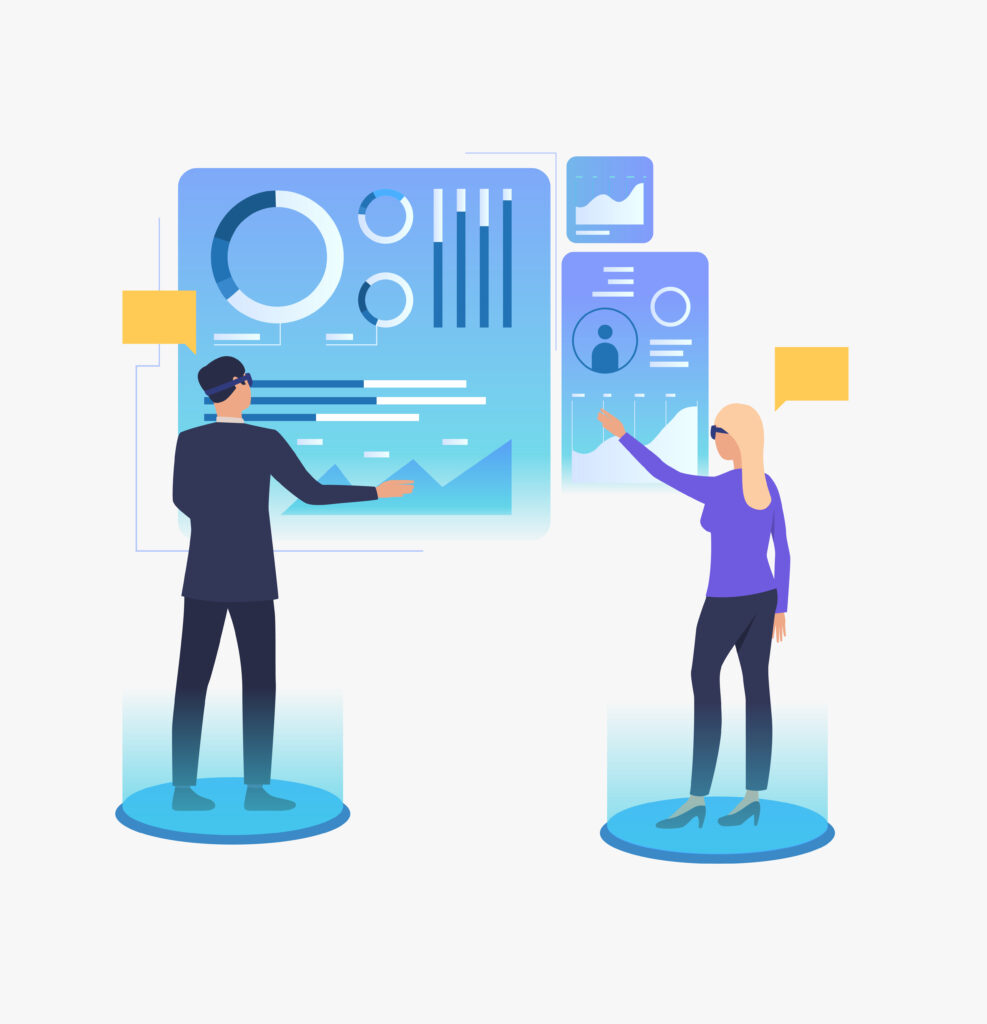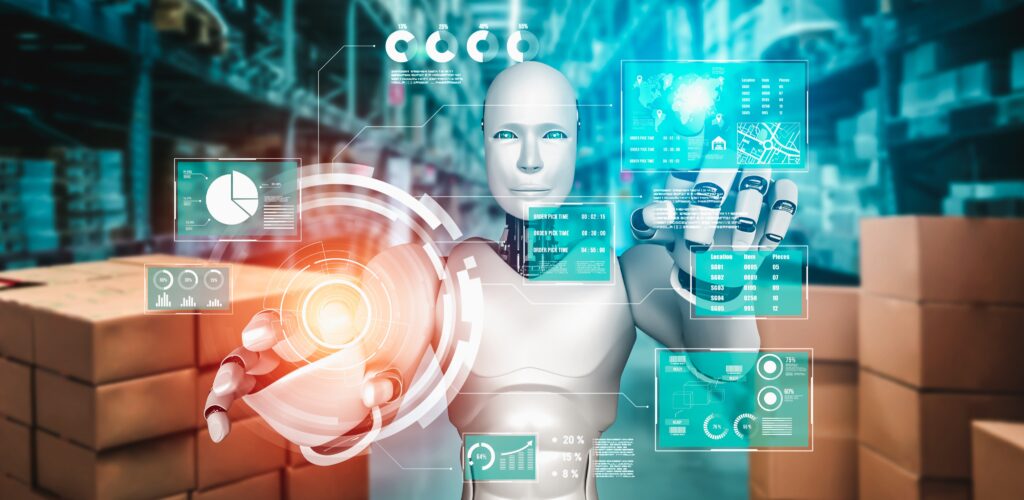Artificial intelligence in procurement automates repetitive tasks and improves decision-making by analyzing large data sets. This article explains key AI technologies, their benefits, and real-world applications in procurement, including ai in supplier selection, automated procurement workflows, and ai-driven procurement optimization.
Key Takeaways
– Artificial intelligence optimizes procurement operations through automation, cost savings, predictive spend analytics, and data analysis, enhancing overall efficiency for procurement teams.
– Key AI technologies including machine learning, natural language processing, and robotic process automation play essential roles in modernizing procurement processes, procurement fraud detection with AI, and improving decision-making.
– Implementing AI in procurement requires defining clear objectives, ensuring high-quality data, and fostering cross-departmental collaboration to overcome challenges and drive successful adoption.
Understanding Artificial Intelligence in Procurement

Artificial intelligence in procurement refers to the use of advanced AI technologies to automate and optimize various procurement tasks. AI is crucial for procurement teams as it delivers substantial cost savings, risk mitigation, and ensures compliance, addressing the insufficiencies of traditional software and manual processes. Procurement professionals can solve some of their biggest challenges by leveraging AI, becoming more effective and efficient in their roles. These smart algorithms free procurement teams to focus on strategic initiatives, automating repetitive, manual tasks and building ai-powered e-procurement systems.
AI analyzes vast amounts of internal and external data, providing insights that significantly improve procurement strategies. The impact of AI algorithms is profound, changing how procurement professionals work and conduct business.
With AI automation, procurement operations are maximized for efficiency, freeing up employees from time-consuming tasks and allowing them to concentrate on higher-value activities. Procurement professionals must understand AI’s capabilities to automate tasks, analyze data, and enhance decision-making to stay ahead in a competitive landscape.
Key Types of AI in Procurement
AI technologies in procurement encompass a range of intelligent systems designed to mimic human intelligence and enhance decision-making within procurement processes. These technologies, such as machine learning algorithms, natural language processing (NLP), and robotic process automation (RPA), are integral to modernizing procurement functions and improving operational efficiency.
Each type of AI uniquely optimizes procurement operations, and understanding these roles is crucial for effective AI leverage in procurement decision-making.
Machine Learning Algorithms
Machine learning algorithms are fundamental in procurement, enabling systems to detect patterns and make predictions or decisions based on data. These algorithms are applied across various procurement processes, such as automatic spend classification, vendor matching, and machine learning in supply management, significantly enhancing efficiency.
Machine learning analyzes historical sales data and market trends, conducting predictive spend analytics that offer accurate demand forecasting and improve strategic procurement decisions.
Supervised learning involves training algorithms to identify patterns in spend data, crucial for accurate spend classification and error detection in previous rule-based classifications.
Unsupervised learning identifies new patterns in data without supervision, aiding in vendor matching and enhancing procurement insights. Integrating external data sources like market indices and supplier credit ratings further enriches procurement data, leading to better decision-making and enhanced procurement efficiency.
Natural Language Processing
Natural Language Processing (NLP) is a vital AI technology that focuses on understanding and interpreting human language to generate human language, optimizing communication and processes in procurement. NLP enables procurement teams to uncover insights from unstructured data sources, including contracts and supplier communications, streamlining processes and improving data analysis through large language models and ai for contract analysis.
Robotic Process Automation
Robotic Process Automation (RPA) streamlines procurement tasks by automating routine and repetitive processes, such as invoice processing and generation, enhancing operational accuracy and efficiency. RPA leverages historical data to reduce human error, freeing procurement professionals to focus on strategic initiatives and automate repetitive tasks.
The use of RPA in procurement significantly improves operational efficiency, ensuring smoother and more reliable automated procurement workflows.
Generative AI Transforming Procurement

Generative AI revolutionizes procurement, driving business acceleration by automating repetitive tasks and improving decision-making capabilities with gen ai, further strengthening ai in procurement decision-making.
As procurement teams increasingly adopt generative AI, they witness significant improvements in efficiency and strategic outcomes, leveraging their procurement team’s expertise.
Applications of Generative AI
Generative AI has a wide range of applications in procurement. It can automate the creation and review of purchase orders, streamlining the entire process from generation to approval. Additionally, generative AI generates detailed supplier summaries, assessing past relationships and performance, which aids procurement professionals in making informed decisions and supporting ai in supplier selection.
Beyond document generation, generative AI assists in analyzing and summarizing complex contracts, highlighting obligations, and generating or expanding contract clauses. This technology also enhances communication within procurement teams by enabling human-like conversations and providing tailored responses to user inquiries, thereby improving overall procurement operations and integrating seamlessly with ai-powered e-procurement systems.
Overcoming Challenges with Generative AI
Implementing generative AI in procurement comes with its set of challenges, which organizations must navigate effectively. Chief Procurement Officers (CPOs) focus on enhancing spend analytics and streamlining contract management to maximize the benefits of generative AI. The effectiveness of this technology is influenced by the organization’s ability and willingness to adapt AI models to specific needs.
Procurement organizations should prioritize training, improve data quality, and invest in change management initiatives to overcome these challenges and ensure successful AI adoption, particularly when deploying intelligent sourcing tools and automated procurement workflows.
Practical Use Cases of AI in Procurement
AI is being applied across various stages of procurement, driving efficiencies from supplier identification to payment processing. This section highlights practical use cases of AI in procurement, demonstrating its applicability and benefits in real-world scenarios.
These use cases showcase how AI tools enhance procurement processes, improve supplier relationship management, and lead to significant cost savings.
Intelligent Sourcing
AI tools significantly enhance sourcing strategies by:
– Analyzing diverse data sources, leading to more informed decision-making and smarter procurement processes.
– Saving time, improving speed, and enhancing accuracy by automating and adding intelligence to sourcing activities.
– Examining historical purchasing data and current market trends.
– Evaluating supplier performance to suggest optimal sourcing strategies using ai powered tools and intelligent sourcing tools.
Furthermore, cognitive sourcing supports procurement by identifying opportunities and automating non-strategic sourcing activities. AI automates initial tasks such as:
– Supplier discovery (supporting ai in supplier selection)
– RFP generation
– Managing bid sheets
– Analyzing RFP submissions to provide comparison summaries These functions improve the overall sourcing process.
Intelligent virtual assistants streamline tasks, generate outreach messages, and identify risks, allowing procurement teams to focus on more strategic vendor management activities.
Automated Contract Management
Automated contract management is another significant application of AI in procurement. Natural Language Processing (NLP) enables procurement teams to extract critical information from legal documents and contracts efficiently, mining contracts for valuable data using text parsing. Generative AI automates tasks such as purchase order processing, spend analytics, and contract lifecycle management, shortening contract review cycles and ensuring compliance.
AI-driven automated contract analysis:
– Analyzes contracts in real-time
– Extracts important facts
– Flags non-compliance risks
– Suggests edits
These capabilities ensure that procurement processes are streamlined and compliant, exemplifying ai for contract analysis within ai-powered e-procurement systems. Automation of these tasks allows procurement professionals to focus on strategic initiatives, thereby improving overall procurement performance.
Supplier Risk Management
AI technologies enhance supplier risk management by:
– Providing real-time visibility into potential disruptions, enabling procurement teams to proactively address supplier risks.
– Monitoring supplier financial health.
– Tracking geopolitical developments.
– Analyzing market signals to identify risks.
– Ensuring supplier performance aligns with organizational standards.
Continuous tracking of supplier performance, finances, and ESG compliance helps organizations mitigate potential disruptions and maintain robust supplier relationships, including procurement fraud detection with ai alongside predictive spend analytics.
Benefits of Implementing AI in Procurement

Implementing AI in procurement offers numerous benefits, including enhanced operational efficiency, significant cost savings, and improved decision-making capabilities. Procurement teams can deliver more value with fewer resources, reduce mistakes, and uncover new cost-saving opportunities even in less obvious spending areas through ai-driven procurement optimization.
AI integration also facilitates ethical and sustainable procurement by integrating automated monitoring and compliance tools. Understanding these benefits sets the stage for detailed discussions in the subsequent subsections.
Enhancing Operational Efficiency
Automating procurement processes with AI can significantly reduce cycle times and operational costs, improving overall operational efficiency. AI streamlines workflows by automating routine tasks, allowing procurement teams to focus on strategic activities that add more value to the organization. Generative AI is capable of delivering significant increases in productivity, effectiveness, and user experience, with some users reporting improvements of over 25%, including:
– Reduced cycle times
– Lower operational costs
– Enhanced productivity
– Improved effectiveness
– Better user experience
Furthermore, AI optimizes the timing for discounts and cash flow management in procurement payment workflows, enhancing financial efficiency. The impact of generative AI on procurement organizations includes improved productivity, streamlined processes, and enhanced operational methods, making it a valuable tool for procurement professionals within automated procurement workflows.
Cost Savings
AI plays a pivotal role in driving cost savings within procurement by:
– Identifying new savings or revenue opportunities
– Facilitating cost-effective procurement
– Enabling faster identification of savings opportunities through AI-backed spend classification and continuous data enrichment
– Enhancing analysis and minimizing human error to ensure efficient procurement activities
These functions significantly contribute to cost reduction.
Generative AI offers a remarkable 31.56% improvement in spend management according to procurement leaders, highlighting its effectiveness in optimizing costs. Moreover, 28.90% of procurement executives recognize the value of cost optimization in their generative AI investments, underscoring the technology’s potential to deliver substantial cost savings.
Full spend transparency, facilitated by AI, involves making all procurement-related expenses accessible to stakeholders without errors, enhancing savings opportunities through spend analysis and predictive spend analytics.
Better Decision Making
AI empowers procurement teams by:
– Providing clear, timely data insights
– Enabling faster and more informed decision-making
– Reducing uncertainty in procurement decisions
– Enhancing overall decision-making efficiency
A significant 67.68% of procurement executives view enhanced decision-making as a key value of generative AI, reflecting its impact on procurement strategies.
AI-driven solutions also minimize the burden of manual processes and allow teams to focus on strategic activities, improving the overall procurement function, especially when embedded in ai-powered e-procurement systems.
Steps to Successfully Implement AI in Procurement
Successfully implementing AI in procurement requires a strategic approach, including:
– Identifying existing pain points and inefficiencies that AI can address.
– Initiating small pilot programs to assess the effectiveness of AI in real procurement scenarios.
– Gaining buy-in from cross-functional teams, including procurement, IT, and finance, to achieve successful AI adoption.
Proactively improving data quality and management is also essential to prevent data issues from hindering AI implementation. The following subsections will delve into these steps in more detail.
Define Clear Objectives
Defining clear objectives is the first step to successfully implementing AI in procurement. Organizations need to identify specific pain points in their procurement processes and set tailored goals to address these issues.
Understanding these pain points allows procurement teams to formulate clear objectives that guide effective AI implementation to achieve desired outcomes, including the rollout of intelligent sourcing tools.
Ensure High-Quality Data
High-quality, organized data is the backbone of successful AI implementation in procurement. Key points to consider include:
– Clean, structured, and centralized datasets are essential for AI systems to function effectively without errors.
– Before deploying new AI tools, it is crucial to prepare datasets to ensure they are AI-ready.
– Ensuring data quality and volume is critical before feeding data into AI models and to analyze large volumes of data processing.
– Capture as much relevant data procurement data as possible, even if it cannot be processed immediately.
Investing in data governance tools helps maintain clean and reliable procurement data, which is vital for leveraging AI’s full potential. AI can also deduplicate and standardize material data, enabling better price comparison and spend classification. These practices ensure that procurement teams have access to high-quality data, improving the overall effectiveness of AI implementation and enabling predictive spend analytics.
Collaborate Across Departments
Collaboration across departments is crucial for successful AI implementation in procurement. Integrating AI solutions into existing systems can be complicated by complex technology environments and technological debt, making cross-departmental collaboration essential for alignment with business goals and securing buy-in.
A mindset open to experimentation, along with comprehensive training and change management, facilitates user adoption of AI tools. Practical implementations of Generative AI features in existing procurement solutions showcase the importance of collaboration in leveraging AI effectively, particularly for ai-powered e-procurement systems.
Common Challenges in AI Adoption
Adopting AI in procurement is not without its challenges. Procurement departments often face significant hurdles, including:
– Understanding what is possible with AI
– Bridging the gap between early adopters and those hesitant to implement AI solutions
– Dealing with organizational immaturity in AI adoption
– Addressing issues such as data quality
– Managing privacy concerns
– Handling existing technology complexities
These factors further complicate AI implementation.
Concerns about data exposure and security can also impede the effective use of AI data driven insights and intellectual property. To unlock AI’s benefits and mitigate risks, a thoughtful approach emphasizing readiness and process alignment is necessary, including controls for procurement fraud detection with ai.
Resistance to Change
Resistance to change is a significant human factor affecting the success of AI implementation in procurement. Training procurement employees and developing new capabilities are essential for effectively adopting AI technologies. The interaction between humans and machines presents challenges, and addressing this resistance is crucial for realizing the benefits of AI in procurement.
Data Quality Issues
Data quality issues are a common challenge in AI adoption, with inaccuracies and inconsistencies often complicating AI implementation. It is unrealistic to expect 100% accurate data for AI in procurement; instead, achieving adequate accuracy is a more attainable goal. Many procurement functions struggle with unstructured and poorly governed data, further hindering AI adoption.
Organizations should prioritize improving data quality alongside AI deployment to enhance the overall effectiveness of AI solutions.
Future Trends in AI for Procurement

The future of AI in procurement is promising, with trends pointing towards more autonomous systems and ethical, sustainable practices. Agentic AI, which operates autonomously to analyze extensive data sets and provide actionable recommendations, represents the next frontier in procurement AI.
Understanding these future trends is crucial for procurement teams looking to stay ahead in the evolving landscape of AI technologies.
Autonomous Procurement Systems
Autonomous existing procurement systems are set to revolutionize procurement processes by eliminating the need for human involvement in operational tasks. These systems are predicted to handle entire sourcing cycles with minimal oversight, allowing procurement teams to prioritize strategic relationships and partnerships, ultimately reducing procurement costs through procurement software and enabling broader ai-powered e-procurement systems.
The potential of fully automated procurement processes lies in their ability to significantly enhance efficiency and decision-making in the procurement process.
Ethical and Sustainable AI Practices
Ethical and sustainable AI practices are increasingly becoming a focus in procurement. Future AI applications will make ethical and sustainable procurement practices more accessible and actionable, promoting responsible sourcing and supplier management.
Autonomous sourcing systems will enable procurement teams to concentrate on strategic suppliers and innovative partnerships, ensuring that AI adoption aligns with ethical and sustainable goals and leverages intelligent sourcing tools.
Summary
In summary, mastering AI in procurement involves understanding its types, applications, and benefits, along with navigating implementation challenges and future trends. AI technologies such as machine learning, NLP, and RPA optimize procurement processes, while generative AI offers transformative potential by enhancing decision-making and operational efficiency. Implementing AI requires clear objectives, high-quality data, and cross-departmental collaboration. Despite challenges, the future of AI in procurement is bright, with trends pointing towards autonomous systems and ethical practices. Embracing AI in procurement can lead to significant improvements in efficiency, cost savings, and strategic decision-making through ai-driven procurement optimization, predictive spend analytics, and ai in supplier selection. The journey towards AI mastery in procurement is challenging yet rewarding, promising a future where procurement teams can achieve unprecedented levels of performance and innovation using automated procurement workflows and ai-powered e-procurement systems.

Leave a Reply